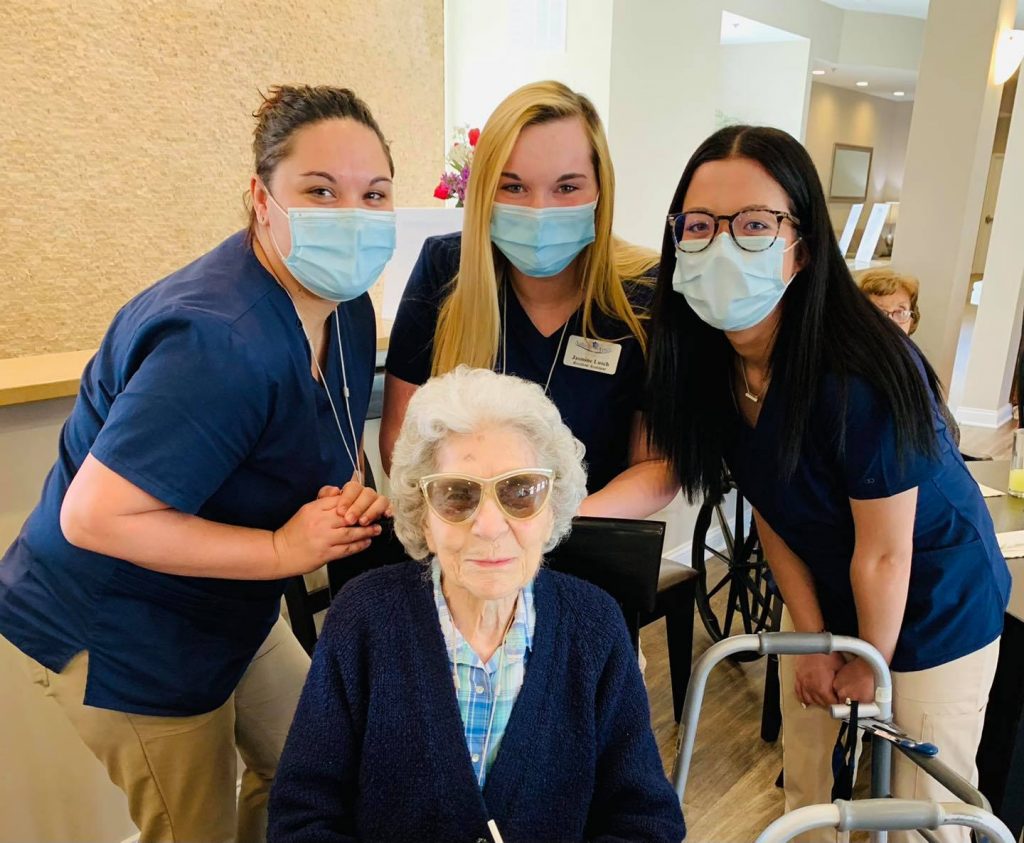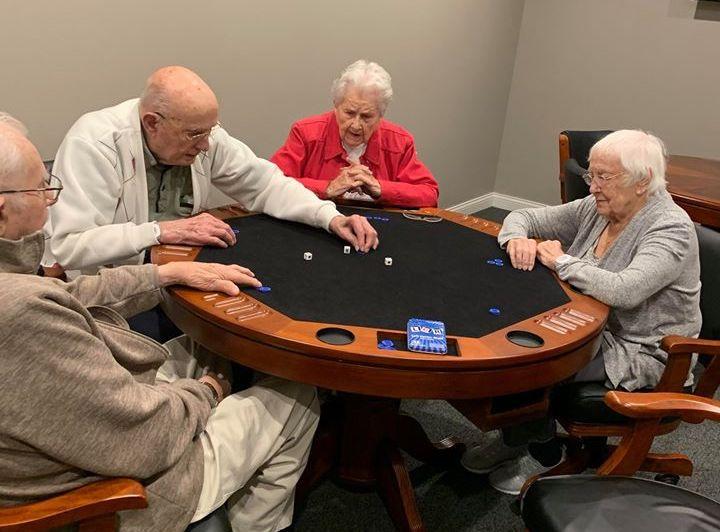What is Assisted Living? A Comprehensive Guide to Senior Support
Finding the best support system for your aging parents can feel overwhelming, especially if they are starting to struggle with daily activities. Assisted living is an option that combines their need for assistance and their desire for independence. More than just another housing choice, assisted living provides both safety and freedom in an environment created explicitly for seniors’ comfort.
Imagine visiting Autumn Trace Communities in Columbia—spacious apartments where each resident enjoys both privacy and a sense of community. Here, seniors dine together on nutritious meals, engage in fitness classes tailored to their abilities, and stroll along safe walking trails lined with seasonal flowers. Having explored communities like this one deeply, I’ve gathered plenty of insights to share with you about what truly makes assisted living beneficial and supportive. Let’s begin by distinguishing what precisely constitutes an assisted living arrangement.

Assisted Living Defined
Seniors who require some assistance with daily activities, such as bathing, dressing, or medication management, but still maintain a degree of independence can benefit from assisted living, a type of residential care. These facilities typically offer private rooms or apartments along with essential services like meals, housekeeping, and access to nursing staff, enabling residents to enjoy a fulfilling lifestyle in a supportive environment.
Designed for older adults who seek assistance with daily tasks but prefer not to reside in an institutional setting like a nursing home, assisted living is fundamentally a unique solution. This form of housing allows residents to retain a sense of independence while accessing necessary support tailored to their individual needs. It’s essential to realize that assisted living isn’t just about care; it’s about enhancing the overall quality of life for seniors through personalized attention and community engagement.
The National Center for Assisted Living (NCAL) highlights that there are over 28,900 assisted living facilities in the United States, serving more than 800,000 residents. These facilities typically provide private apartments or rooms, along with communal dining areas and various activity spaces, fostering both personal space and social interaction. This combination creates an environment where seniors can thrive—not merely survive.
Additionally, the variety among these facilities is notable; some places may feel more like home than others.
For instance, Autumn Trace Communities in Columbia offers spacious floor plans that cater to a diverse range of needs. Residents can choose from different layouts, allowing them to live comfortably and receive any necessary assistance for daily activities. This flexibility allows seniors to personalize their living experience while remaining connected to others in the community—a crucial aspect of maintaining mental and emotional well-being.
Furthermore, most assisted living facilities focus on creating engaging social programs and recreational activities that help residents stay active and involved. This could be anything from fitness classes to arts and crafts sessions, and these opportunities not only contribute to physical health but also foster friendships and community bonds among residents. By blending independence with communal support, assisted living generates a dynamic environment where seniors can flourish as they navigate this new chapter in their lives.
Understanding how these communities operate opens the door to exploring the various environments available for seniors seeking supportive living arrangements.
Community Environment Overview
Carefully crafted assisted living communities foster a sense of belonging while providing necessary resources for residents to thrive. These communities combine safety features with a warm, homely atmosphere, allowing seniors to feel engaged and cared for. Imagine a bustling hub that celebrates independence while providing ample support, enabling residents to relish their independence without compromising their comfort or safety.
These communities intentionally design their layout to enhance interactions among residents. Common areas encourage socialization, creating opportunities for friendships to blossom. For instance, communal dining ensures the daily serving of nutritious meals and serves as a gathering place for residents to gather, exchange stories, and forge connections over a meal. This nurturing environment actively counters feelings of isolation that some seniors may experience when living alone.
Additionally, programs dedicated to physical and mental well-being populate these environments. Accessible gym equipment in fitness centers promotes active lifestyles and offers customized exercise classes that cater to various abilities. Facilities may also include walking trails meandering through beautiful gardens promoting outdoor activities that provide both physical benefits and mental serenity.
The overarching goal of an assisted living community is to alleviate worries associated with daily tasks while enriching the quality of life through interaction and engagement. By focusing on creating welcoming spaces that cater to social needs, these facilities transform into actual homes away from home, giving seniors the ability to enjoy life actively and meaningfully.
Types of Assisted Living Facilities
Assisted living facilities come in various forms, each designed to cater to the diverse needs of seniors. These facilities create environments where residents can maintain their independence while receiving the necessary support tailored to their preferences. The variety ensures that whether someone seeks a social atmosphere or specialized care, there’s an option that fits.
Apartment-Style Living
One popular type is apartment-style living, where residents have their own private space, either as individuals or as shared accommodations. These setups resemble studio apartments or one-bedroom apartments, complete with kitchenettes and personal bathrooms. Residents can enjoy their autonomy while also accessing common areas for socializing, dining, and activities. This arrangement fosters a sense of community but still permits privacy.
As we transition into another model, it’s important to note how shared housing complements the idea of community living.
Shared Housing
Then, there’s shared housing, which offers a unique blend of companionship and privacy. In these setups, residents maintain their bedrooms while sharing communal living spaces such as kitchens and lounges. This model not only promotes social interaction but also allows for an affordable living situation. Residents can engage in daily activities together while still having their retreats at the end of the day.
While many facilities focus on general assistance, others take a more specialized approach.
Specialized Facilities
Finally, we find specialized facilities designed to address specific health concerns or conditions. One of the most notable types is memory care units tailored for individuals with Alzheimer’s disease or other forms of dementia. These environments incorporate secure layouts and trained personnel who understand how to manage cognitive challenges effectively. They provide individualized care plans, ensuring that residents receive attention tailored to their specific needs.
With various options available, understanding each facility’s focus and intent can guide families toward the best fit for their loved ones’ needs. Let’s now look at the various aspects of personal care services that enhance life within these communities.
Personal Care and Health Services
At the heart of assisted living is the recognition that every individual’s journey through aging is unique. Facilities provide tailored personal care and health services that adapt to the changing needs of their residents. These services are essential in promoting independence while ensuring safety. Assistance with activities of daily living (ADLs)—like bathing, dressing, and eating—allows individuals to maintain their dignity and self-worth, even when physical challenges arise.
Medication management is a vital aspect of personal care. As people age, managing multiple prescriptions can become overwhelming. Trained staff members often take a proactive role in organizing medications, reminding residents when it’s time to take them, and ensuring proper dosages. Regular health assessments play a significant part in this equation, monitoring residents’ vital signs and overall health to help catch potential issues early.
Facilities may also coordinate closely with healthcare providers to create comprehensive care plans tailored specifically for residents. This involves regular communication between nurses, doctors, and specialists to ensure everyone is on the same page regarding treatment options and necessary adjustments.
We equally prioritize emotional well-being beyond physical health. Daily schedules integrate social activities and wellness programs. Access to group exercises, art classes, or movie nights fosters community and companionship among residents, key components of mental health.
Social and Recreational Programs
Social and recreational programs serve as vital lifelines that foster connection, joy, and a sense of belonging among residents. These programs cater to diverse interests, ensuring that there’s something for everyone.
For instance, regular yoga classes provide physical benefits like increased flexibility while creating a tranquil environment where friendships can flourish. Similarly, art workshops allow residents to express their creativity and explore new hobbies.
When you walk through a community filled with music from live performances or laughter from game nights, it becomes clear how integral these activities are to daily life.
A meaningful aspect of these programs is their potential to prevent isolation, a significant concern for many seniors. Participating in group outings to local attractions can break the monotony of everyday life and introduce exciting experiences.
Importance of Active Engagement
Active participation in social and recreational programs also has tangible benefits for mental health. Research shows that remaining socially active can decrease feelings of loneliness, potentially reducing risks associated with depression and cognitive decline in older adults.
Studies have found that elderly individuals who participate in such activities have better memory retention and improved emotional regulation, making them feel more connected to their environment and each other.
With this understanding, prospective residents and their families must recognize the significance of vibrant social atmospheres when evaluating potential living arrangements. The right facility will meet personal care needs while actively promoting fulfilling social interactions through diverse programming tailored to resident interests.

Key Benefits for Seniors
One of the most significant advantages of assisted living is the enhanced quality of life it provides. This environment promotes comfort, safety, and independence. Imagine a space where seniors can maintain personal routines while engaging in a community that encourages meaningful social interactions. Regularly scheduled activities—ranging from exercise classes to arts and crafts—help reduce feelings of loneliness, creating connections among residents that often lead to lasting friendships.
Enhanced Quality of Life
The structure of assisted living facilities significantly uplifts a senior’s daily experience. For example, they could begin their day by sharing a nutritious breakfast with their peers, followed by a customized morning yoga class based on their activity level. The sense of purpose and belonging cultivated through these activities extends beyond mere entertainment; it’s essential for mental health. Furthermore, an environment dedicated to social interactions diminishes isolation, which studies show can negatively impact wellness in older adults.
Professional Care
Another crucial benefit is the professional care available within these communities. Residents have access to trained staff who can promptly address any medical needs, whether it’s medication management or assistance with mobility challenges. Immediate access provides a high level of support that many seniors may struggle to manage at home alone.
Remarkably, a study by the National Center for Assisted Living found that while 87% of residents require help with daily activities, only 16% feel limited in their ability to perform these tasks. This statistic highlights how professional support empowers seniors—helping them maintain dignity while promoting better health outcomes.
As evidenced by these satisfaction rates, seniors seeking a balance between autonomy and assistance increasingly view assisted living as a desirable choice. Understanding these key benefits enables families to make well-informed decisions regarding long-term care options for their loved ones.
Those interested in exploring assisted living options further should consider contacting Autumn Trace Communities for personalized guidance. For more information, visit Autumn Trace Communities or call us at (260) 799-1700 today!
Don’t just take our
word for it.
A new building, friendly staff, three home-cooked meals daily, pet-friendly, and close to shopping!
Beth G.
Very friendly staff, good food, and a clean building!
Dorothy K.
Schedule A Tour

Download our current pricing!
Autumn Trace Senior Communities is transparent about pricing and will never ask for an expensive buy-in. We have included in the monthly fee all the worry-free amenities you expect and offer additional services ala carte, so you only pay for the extra services you need. See our current apartment suite leasing options and prices.